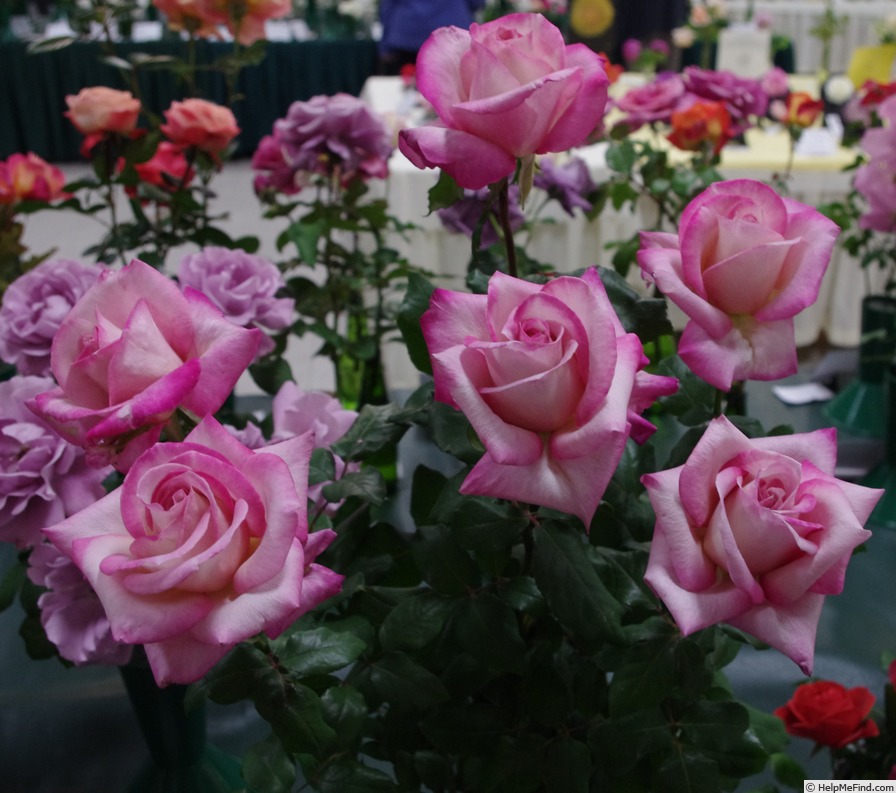|
|

Photo courtesy of Johno
ARS:
Pink blend Hybrid Tea.
Registration name: WEKaq
Bloom:
Pink blend, pink reverse, ages to lighter . Moderate fragrance. 25 to 35 petals. Average diameter 4". Large, full (26-40 petals), borne mostly solitary, cluster-flowered, in small clusters, high-centered bloom form. Blooms in flushes throughout the season.
Habit:
Tall, upright. Medium, semi-glossy, dark green foliage.
Growing:
USDA zone 6b through 9b (default). Can be used for cut flower or garden. Produces decorative hips. Disease susceptibility: disease resistant. Spring Pruning: Remove old canes and dead or diseased wood and cut back canes that cross. In warmer climates, cut back the remaining canes by about one-third. In colder areas, you'll probably find you'll have to prune a little more than that.
|